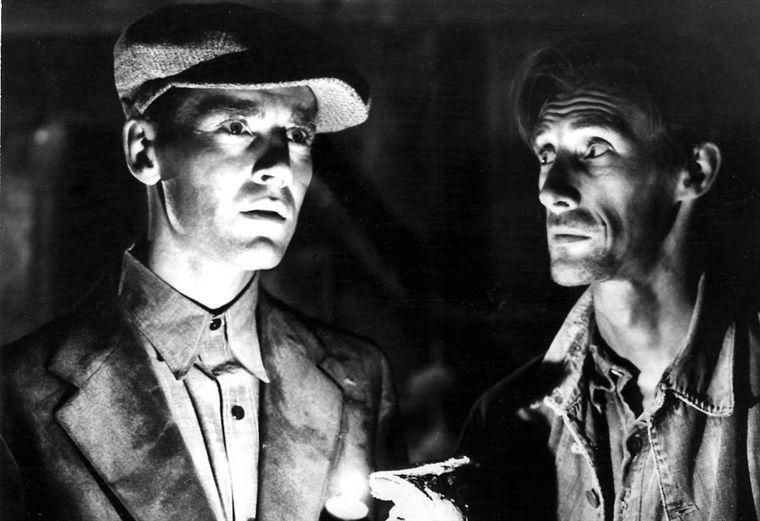
John Steinbeck’s 1939 novel The Grapes of Wrath opens with a view of the “scarred earth,” then lifts its eyes to consider the scarred people that lived on that earth. It finds these people staggering through the Dust Bowl storms that struck the Southern U.S. in the 1930’s. This early passage from the novel seems to lay bare the crisis of soul that accompanied the crisis of the land : “And the women came out of the houses to stand beside their men to feel whether this time the men would break….the corn could go, as long as something else remained….After a while the faces of the watching men lost their bemused perplexity and became hard and angry and resistant. Then the women knew that they were safe, and that there was no break.”
The land, the people, and the crisis remain intact and colossal in John Ford’s 1940 film version of the Steinbeck book.
As for the land, it is amazing to consider that the film was shot so close in time and location to Oklahoma’s unfolding Dust Bowl disaster. Though some of the film’s early locations are sets, it does actually contain some shots from the Oklahoma of that time as well as the road heading west to California. You keep expecting a real-life dust storm to roll right over the horizon and overwhelm the characters onscreen. As for the people and the crisis, we are not passive viewers but we are living with them on the screen for these two hours.
The book and the film ask keen questions like : What does it mean for a person’s heart to harden? What does it mean for it to break? What happens to our heart and our soul in times of disaster and in the everyday weariness of the world? Does it even matter what becomes of our hearts?
We consider those questions of the heart, but when the film is over it is the image of the faces we carry with us to bed at night. The faces carry the lines and weights of these characters’ hearts. We are struck by the way these faces are how we remember the hearts.
Most enduring among the faces is Henry Fonda as Tom Joad, whose visage evokes the man who has left prison only to find his family evicted from home in the wake of the economic collapse of the Dust Bowl. His Ma is worried that he will become hard and angry, but the scar on his face by the end of the film reminds us that he ends more broken than hardened. We realize that, despite what the women thought in those opening lines of the book, this brokenness is safer than the other.
This story on page and screen is also a passionate plea for just and fair treatment of the common worker, as well as for loving our neighbor in real and tangible ways. Its love for the downtrodden and abandoned is a rallying cry colored in the same shade as this passage from the Bible’s book of Isaiah : “Is not this the kind of fasting I have chosen: to loose the chains of injustice and untie the cords of the yoke, to set the oppressed free and break every yoke? Is it not to share your food with the hungry and to provide the poor wanderer with shelter — when you see the naked, to clothe him, and not to turn away from your own flesh and blood?” – Isaiah 58:6-7
In the end, as those faces pass through our cinematic memory, we may find that perhaps Jane Darwell as Ma Joad rises highest in our minds. When we recall the solid vigor of that full face, we think of the one whose strong but gentle words work some of the wonder in Tom Joad. She knows it would be death for Tom to become “mean mad.” She reminds him of this, and in so doing brings him back from the brink. Would that a Ma Joad were to speak to us all at the moments our hearts threaten to become stone. Ma Joad is also the one character who looks at the starving kids in the labor camp, looks at the stew in the pot, and says, “We can’t send ‘em away.”
This is a heart that is breaking, and the breaking is that of a new day.
– Brian Duignan
- Directed by: John Ford
- Produced by: Nunnally Johnson Darryl F. Zanuck
- Written by: Nunnally Johnson John Steinbeck
- Music by: Alfred Newman
- Cinematography by: Greg Toland
- Editing by: Robert L. Simpson
- Release Date: 1940
- Running Time: 129
- Language: English
Arts & Faith Lists:
2020 Top 100 — #39